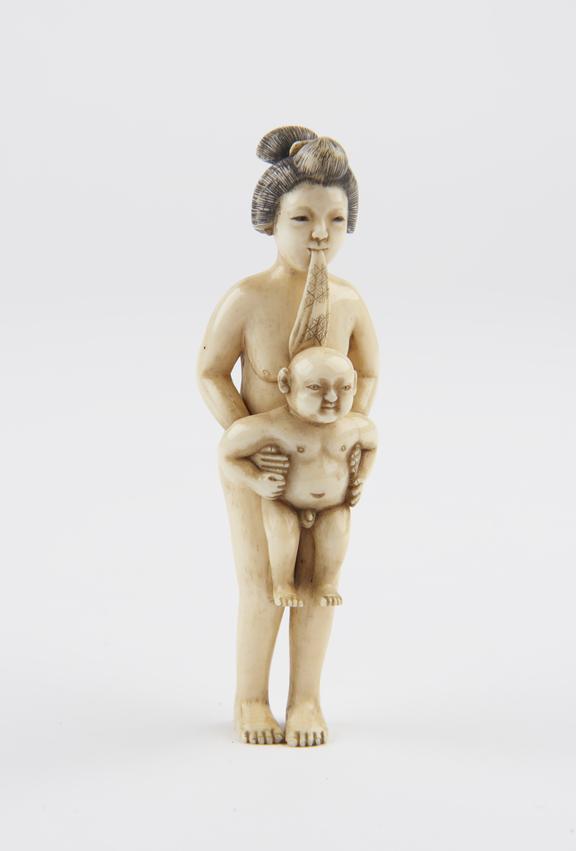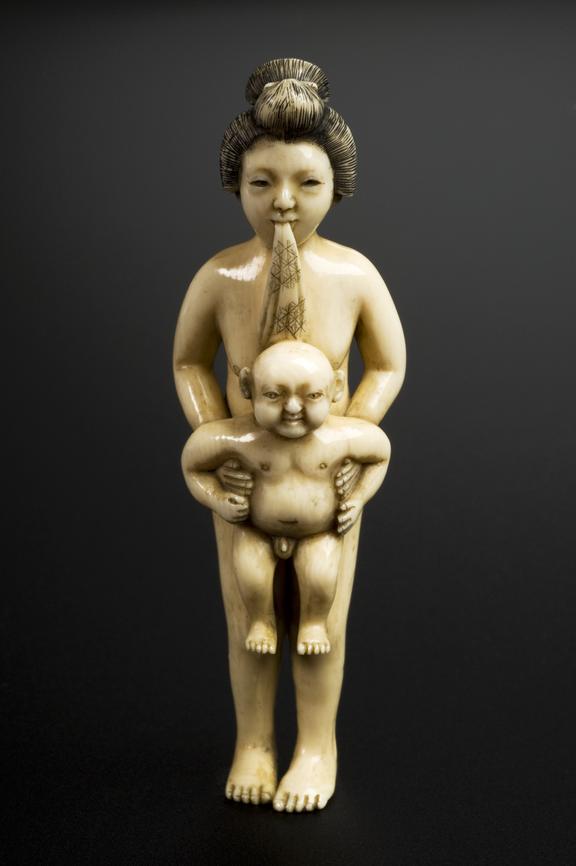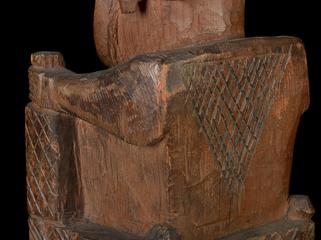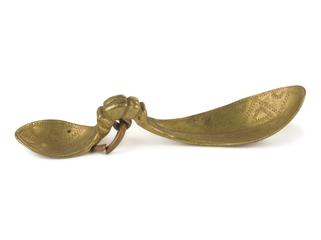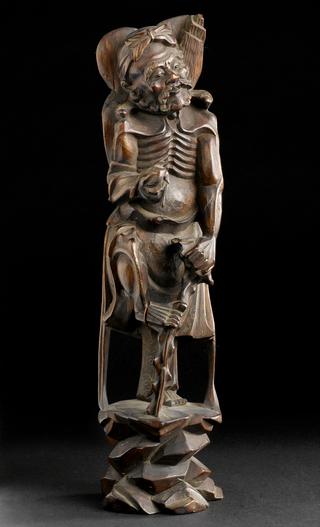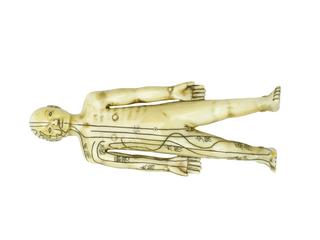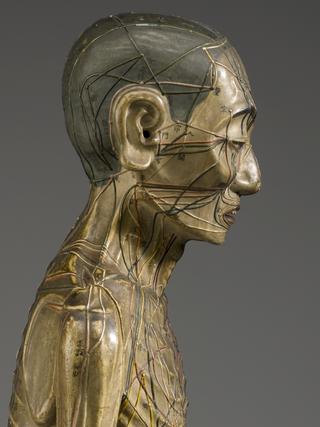


Ivory figure group, possibly a netsuke, in the form of a naked woman and baby boy having just taken a bath, Japanese, 18th or 19th century
This small ivory figurine shows a naked woman and baby boy having just taken a bath. A towel is held between the mother’s teeth as she prepares to dry him.
It is possible this was used as a Netsuke. These are toggle-like ornaments. They hang objects such as medicine boxes or tobacco pouches from the sash of a kimono - a traditional form of Japanese dress, although this figurine lacks the familiar holes needed for attachment. Netsuke carving is a form of miniature sculpture that developed in Japan over several hundred years. They were often beautifully decorated with elaborate carving, lacquer work, or inlays and made of wood, ivory or porcelain.
Details
- Category:
- Asian Medicine
- Collection:
- Sir Henry Wellcome's Museum Collection
- Object Number:
- A641232
- Materials:
- ivory
- Measurements:
-
overall: 80 mm x 27 mm x 22 mm, .02kg
- credit:
- Glendining
